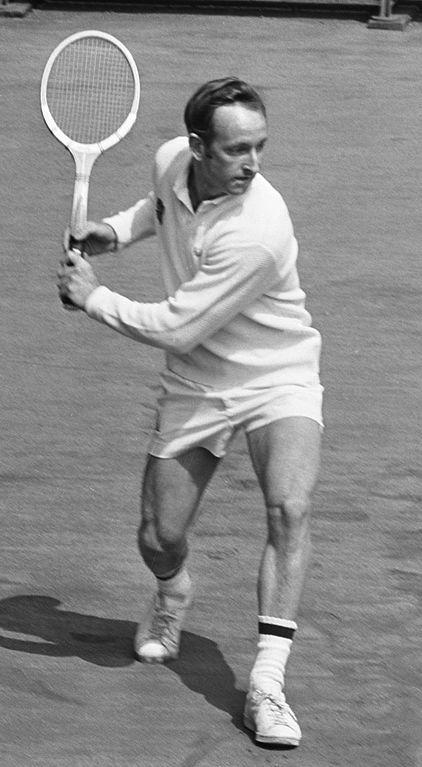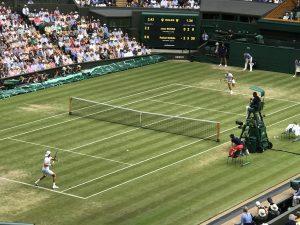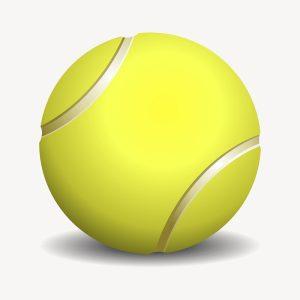We may earn money or products from the companies mentioned in this post.
Introduction

Tennis, a sport renowned for its elegance and intensity, has captured the hearts of millions around the world From its humble beginnings in medieval Europe to becoming a global phenomenon, tennis has evolved in numerous ways over the centuries One aspect that has remained constant is the scoring system, which adds an intriguing layer of complexity to the game Understanding tennis scores is not only crucial for players striving for victory but also enhances the spectator experience, making it easier to follow and appreciate the unfolding drama on the court
Brief History of Tennis Scoring System
The origins of tennis can be traced back to various ball-and-racket games played across ancient civilizations such as Egypt, Greece, and Rome However, it was during medieval times that a precursor to modern tennis called “real tennis” emerged in France and England In this early version of the game, scores were kept using a clock face-like system that incremented from 15 to 30 to 40 before winning a game
Over time, as real tennis morphed into lawn tennis – the form we recognize today – several modifications were made to simplify and standardize scoring The traditional clock face system gave way to a numerical score progression where each point won equated to one unit (eg, 15-0). This evolution allowed for greater clarity and ease when keeping track of scores during matches
Importance of Understanding Tennis Scores
1 Enhancing Spectator Experience
For spectators watching a thrilling match unfold on their screens or from stadium seats, understanding tennis scores is crucial for truly immersing themselves in the action Being able to follow along with the scoreline enables fans to anticipate momentum swings, identify critical moments in a match, and appreciate how players respond under pressure
Moreover, understanding tennis scores provides spectators with valuable context and insight into a player’s performance It allows them to gauge the competitiveness of a match, understand how close a player is to winning a set or the match itself, and follow the ebb and flow of momentum between opponents This deeper understanding enhances the overall viewing experience, making it more engaging and enjoyable
2 Playing the Game Effectively
Beyond spectators, players themselves must possess a thorough understanding of tennis scores to compete effectively on the court Tennis is a mentally demanding sport, and keeping track of scores ensures players can make informed decisions about their strategy and approach during crucial moments
Understanding the scoreline enables players to assess their current situation within a game or set, helping them determine whether they need to take risks or adopt a more conservative approach It also allows them to adjust their tactics based on their opponent’s score, exploiting potential weaknesses or adjusting their game plan accordingly
In conclusion, grasping the nuances of tennis scores is vital for both spectators seeking an immersive viewing experience and players aiming for success on the court By appreciating the history behind its scoring system and recognizing its significance in enhancing engagement and strategic decision-making, we can fully embrace all that this captivating sport has to offer
What is Zero in Tennis?

In the world of tennis, the concept of “zero” holds a unique significance It is commonly referred to as “love” and plays an essential role in the scoring system Understanding this terminology can help you navigate through the game with ease
Love in the Tennis Scoring System
The term “love” might seem out of place when it comes to sports, but in tennis, it has a specific meaning and origin The word “love” is believed to have originated from the French word “l’oeuf,” which means egg This connection arises from the similarity between zero (0) and an egg’s shape
Relationship between Zero and Love in Tennis Scores
In tennis, each point earned by a player contributes to their overall score However, when a player has zero points, it is referred to as “love” This terminology adds a touch of charm and intrigue to the game
The point system in tennis starts at love (zero points) and progresses as players earn points For example, if one player scores their first point while their opponent remains at zero, the score would be called out as “15-love”
As the game progresses further, additional points are added to either side’s score until someone reaches four points or more When calling out scores with love involved, you may hear phrases like “30-love” or even “40-love,” indicating one player’s dominance over their opponent without conceding any points themselves
An interesting aspect of using love instead of zero is that it brings an element of uniqueness and character to tennis scoring It sets tennis apart from other sports and adds its own distinctive flavor
The Tennis Scoring System Explained

Tennis is a game of strategy, skill, and endurance Understanding the scoring system is essential to fully appreciate the sport Let’s dive into the details of how tennis scores are calculated and announced
Basic Point System
In tennis, points are earned in increments of fifteen, thirty, forty, and ultimately leading to winning the game But have you ever wondered why these specific numbers are used?
Well, it’s believed that the origins of this scoring system can be traced back to French court games in the 15th century The numbers represent a progression from one point to another, with “fifteen” symbolizing the first step towards victory, followed by “thirty,” and finally “forty” Once a player reaches forty points and wins the next point, they secure the game
Calling out Scores
When it comes to announcing scores during a tennis match, there is a particular order that must be followed The server’s score is always called out first
Additionally, when both players have an equal number of points (eg, Fifteen-all), it is referred to as a tie or “all” However, things get more interesting when both players reach forty points each – this is known as “deuce”
Advantage and Winning Points
Advantage sets tennis apart from many other sports When a player scores after deuce has been reached (ie, forty-all), they gain advantage This means they only need one more point to win the game
If the player with advantage successfully wins the next point, they win that game outright However, if their opponent also scores at this stage (called “advantage in”), the game continues until one player wins by two clear points
So, next time you watch a tennis match, pay close attention to the scoring system Understanding the meaning behind each score increment, calling out scores correctly, and grasping the concept of advantage will enhance your enjoyment of this thrilling sport!
Common Questions about Zero (Love) in Tennis

Have you ever wondered why a score of zero is called “love” in tennis? It’s certainly an intriguing question that has sparked many discussions among players and fans alike
Why is it called “love” instead of “zero”?
The origin of the term “love” to represent a score of zero in tennis is not entirely clear There are several possible explanations that have been proposed over the years
One theory suggests that “love” comes from the French word for egg, which is “l’oeuf” The shape of an egg resembles the number zero, and it is believed that this association led to the use of “love” in tennis scoring
Another theory suggests that “love” originated from the English phrase “playing for love,” meaning playing for nothing or without any stakes This idea ties into the concept of starting with a score of zero, where there are no points or advantages at stake
What happens when both players have zero points?
In tennis, when both players have zero points, it is referred to as a “love-all” situation To call out the score, you would say “love-all” This signifies that neither player has scored any points yet
Does love apply to all levels of amateur and professional play?
The term “love” applies to tennis scoring across all levels of play, whether it be amateur or professional It is a universal way to represent a score of zero in tennis and remains consistent throughout different competitions and tournaments
How does understanding “love” improve one’s gameplay or viewing experience?
Gaining an understanding of what “love” means in tennis can enhance both your gameplay and viewing experience By knowing the significance of each score, players can strategize and adapt their tactics accordingly
For example, if a player is down by one point while their opponent has a score of “love,” they may choose to take more risks in order to catch up Conversely, if both players have a score of “love-all,” they might focus on building momentum and capitalizing on opportunities as the game progresses
As a viewer, understanding the scoring system allows you to follow the match more closely and appreciate the strategies employed by the players It adds depth to your comprehension of the game and enhances your overall enjoyment of tennis
Useful Links

Why is Tennis Scored the Way it is? (Tennis Scoring History)
Why do we say love? And other tennis jargon
Zero, in tennis Crossword Clue Answers
Love, l’oeuf, and tennis
Why is zero called ‘Love’ in tennis? Wimbledon scoring system …
Why do they say “love fifteen,” in tennis?
How to Keep Score in Tennis
Why is a score of zero in tennis called love?
What Does Love Mean In Tennis?
Why Do They Say Love Instead of 0 in Tennis?
Tennis “Love” and the Love of Tennis
Is This Why A Score Of Zero Is Called Love In Tennis?
Does Love Conquer All In Tennis?
Tennis Scoring: Points, Sets & Games | Tennis Rules
Why Is Tennis Scored So Weirdly?
What does love mean in tennis?
In tennis, does anybody know why the scoring goes 15 to 30 …
Love in tennis – Meaning, Use cases and Word’s origin






